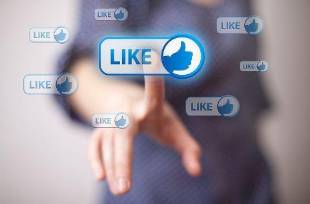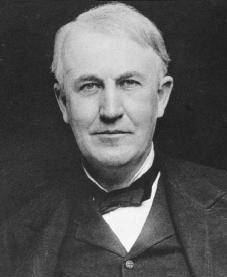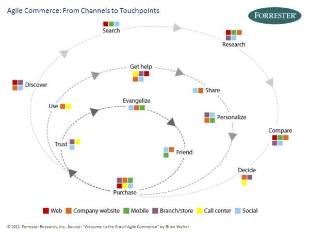What’s your brand’s friendliness factor? Perhaps it’s the stream of debates between the Republican presidential candidates that have ratcheted up discussions of likeability these days. But it seems I’m seeing a focus on friendliness everywhere from advertising strategies to the media profiles of CMOs. The psychological roots of likeability run deep, impacting a broad swath of marketing activities today.
have ratcheted up discussions of likeability these days. But it seems I’m seeing a focus on friendliness everywhere from advertising strategies to the media profiles of CMOs. The psychological roots of likeability run deep, impacting a broad swath of marketing activities today.
During political campaigns, media experts revel in discussing likeability ratings for each candidate. If you believe the pundits, much of Mitt Romney’s woes trace to voters’ concerns that he is highly scripted, and has an “almost robotic personality”. Romney’s privileged upbringing and unique faith tradition place him outside the mainstream, making it tough for many voters to connect with his experiences. All of this adds up to dings for Romney’s friendliness factor. Weeks ago, he actually set out on a likeability tour, during which Romney aimed “to get voters to see him as a nice guy and a family man.”
High Likeability Reduces Social Distance
Likeability relates to a core facet of our psychological makeup called “social distance.” When considering how others rate, we assess whether we feel a social connection with them at the levels of power, identity, as well as diverse social aspects of culture. Babson professor Anne Donnellon has written extensively about social distance in her book Team Talk as well as many other texts. Affiliation rises if members of a group can speak to each other meaningfully using casual language, discover shared interests, and form bonds related to life purpose. These social distance measures are as valid for assessing candidates for political office as they are for brands and spokespeople within global companies.
As never before, brands face a new math when it comes to scoring high on their likeability quotients. Being on the outer fringes of friendliness today spells doom. Brands are now required to minimize perceived social distance in virtually every customer interaction – a daunting challenge no matter the size of your marketing budget. I think three key factors are driving this trend today.
Likeability Pressures Face Every Brand Today
First and perhaps most obviously, the availability of digital details for anything a consumer might want to buy requires that brands establish rapport at every touch point. Forrester Group recently released a study stating that today’s brands must navigate as many as 13 touch points. Termed Agile Commerce, this expanded range of customer engagement positions likeability as uniquely make-or-break component of every transaction.
Second, brand voice must span greater distance today. For example, not only does Target need to tell me they have reasonable prices, they must reinforce their unique point of difference around “design for everyone” in a way that appeals to me, a way that feels friendly and aligned with my interests. Not only does Levi’s need to convince me that I can look great no matter what my jean size, they must convince me that they’re more in synch with my lifestyle than Wrangler or Lucky. Levi’s notably stumbled in its recent Curve ID Jeans ad campaign, positioning Levi’s as a go-to brand for heavier women yet showing thinner models in the ads. When prospects feel sucker-punched by false headlines, brands become less likeable. The reach of the brand’s voice shrinks, and friendliness shrinks right along with it. Just ask Sears.
Perhaps the biggest shift I see, however, lies in the third factor. More and more, likeability is also becoming associated with transparency. When Netflix shifted its pricing model, customers rebelled, and likeability took a left to the jaw as over one million subscribers zapped their Netflix subscriptions. Similarly, Johnson & Johnson’s extensive quality issues over the past 18 months reveal the company had not been honest with analysts or customers about the depth of its problems. The body blow to the Tylenol portfolio – including Infant Tylenol – exceeds $1 billion. J&J’s recent appointment of Vice Chairman Alex Gorsky to the CEO spot offers a new start, but it will probably take years to rebuild the rarified likeability scores Tylenol previously enjoyed.
Driving Likeability Is Tough for Global Leaders
What can companies do to keep their brands’ likeability ratings high? Facebook CEO Mark Zuckerberg and GE CMO Beth Comstock offer two solid examples. Zuckerberg, a billionaire many times over, still remains likable and approachable despite his celebrity. Even knowing there are lots of extra zeros on his personal paycheck, customers admire Zuckerberg’s pluck and see facets of themselves in his boyish style. Although Facebook has come under scrutiny for its new timeline format as well as an array of privacy policy shifts, grumbling customers have not abandoned ship.
GE CMO Beth Comstock probably has one of the toughest jobs facing a global marketer today. Maintaining momentum behind 
Recently, Comstock credited Thomas Edison for inspiration in propelling the company’s unique voice. A genius renowned for his ‘common touch,’ Edison’s likeability factor with the public during his lifetime was enviable. The innovations he developed reached into virtually every household and spanned nearly every age group. Tesla mavens aside, we can all take a cue from Edison’s mastery in integrating his incredible megabrand with likeability (One can only imagine how many Facebook friends Edison might have logged by now…).
Consider the friendliness factors of your brand. How does it reduce social distance? Focusing on likeability and brand voice offers marketers a unique pathway to customer loyalty and engagement today.
